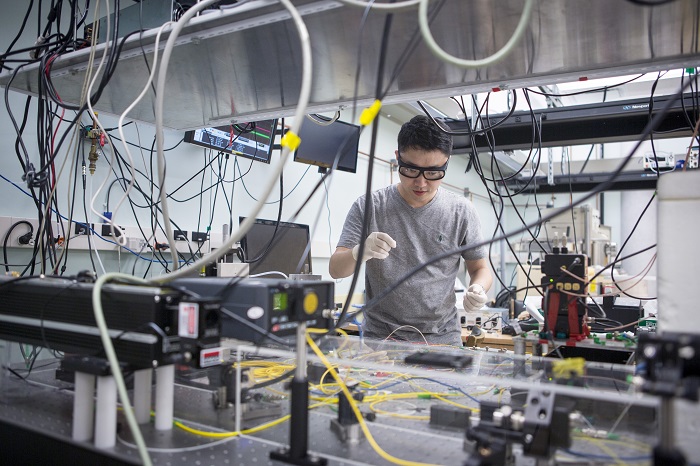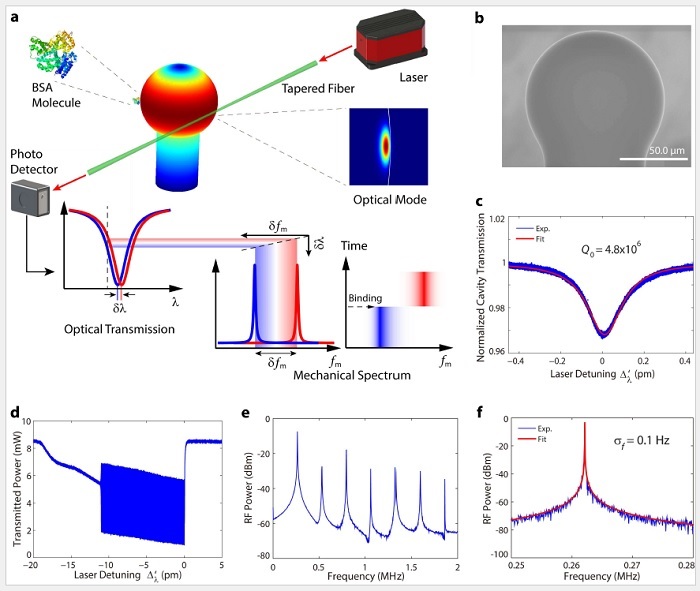July 27, 2016
A team of engineering researchers from the University of Victoria (UVic) and the University of Rochester (UR) has developed a way to detect single molecules using a light-based technology inspired by the “whispering gallery” effect, first discovered in London’s iconic St. Paul’s Cathedral.
The new technology, described in a study published today in the peer-reviewed journal, Nature Communications, has many potential applications, including medical diagnostics, drug development, security screening and environmental science.
“The ability to detect a single molecule or nanoparticle is essential for many applications,” says Wenyan Yu, a PhD student and one of the paper’s authors along with photonic engineer Tao Lu of UVic, and optical engineers Wei Jiang and Qiang Lin of UR. “To date, many approaches have been used to observe single particles. Our discovery may allow scientists the ability to detect particles as miniscule as a single atom, or a single base pair of DNA.”

Wenyan Yu
The whispering gallery of St. Paul’s Cathedral in London is an acoustic marvel. When a person whispers against one wall, the voice travels around the chamber’s circular rim and is clearly audible over 34 metres away on the other side. A “whispering gallery microcavity” is a kind of gallery-in-miniature, typically 100 microns in diameter—about the width of a human hair—in which waves of light, rather than sound, can be confined in a microstructure.
Light circulating inside the cavity produces a force that makes the cavity vibrate, or quiver, creating the so-called optical spring effect. The research team discovered that when an individual particle or biomolecule lands on the surface of quivering microcavity, the optical spring force changes the vibration in a particular and measurable way.
“Although the optical spring effect has been known for more than a decade,” says Wei Jiang, “this discovery significantly enhances the sensitivity of the device.”
Lu and the team are now refining the detection sensitivity and says eventually it could be used to detect specific protein molecules to diagnose cancer at an early stage, or to find out whether a drug interacts with single biomolecules.
The UVic team fabricated the devices, prepared the samples, conceived, designed and performed the experiments, and processed the data. The UR team discovered the sensing principle and mechanism, developed the theory, and conducted the numerical simulation. The teams worked together on the analysis and interpretation.
The work is supported by the Natural Sciences and Engineering Research Council, the Canada Foundation for Innovation, the Defense Advanced Research Projects Agency and the US National Science Foundation.
The DOI (10.1038/NCOMMS12311) can be used to retrieve the paper by adding it to the following URL: http://dx.doi.org/















